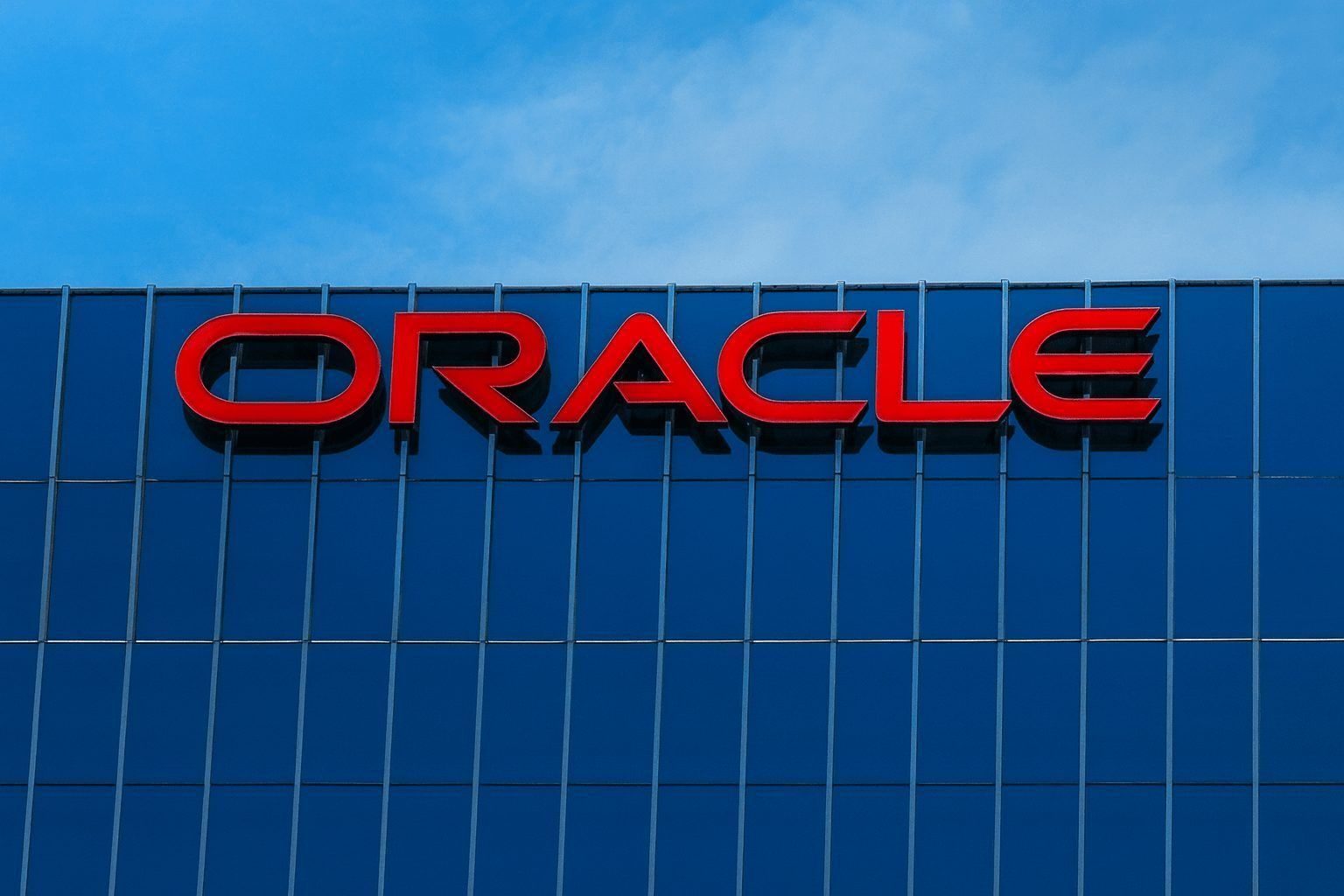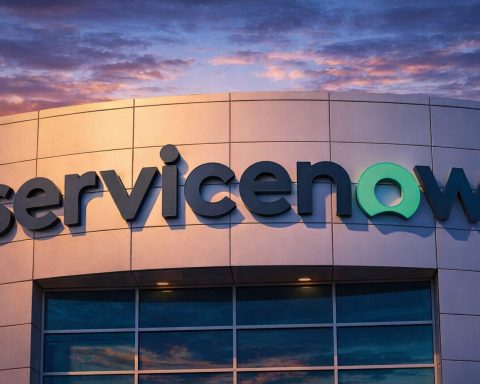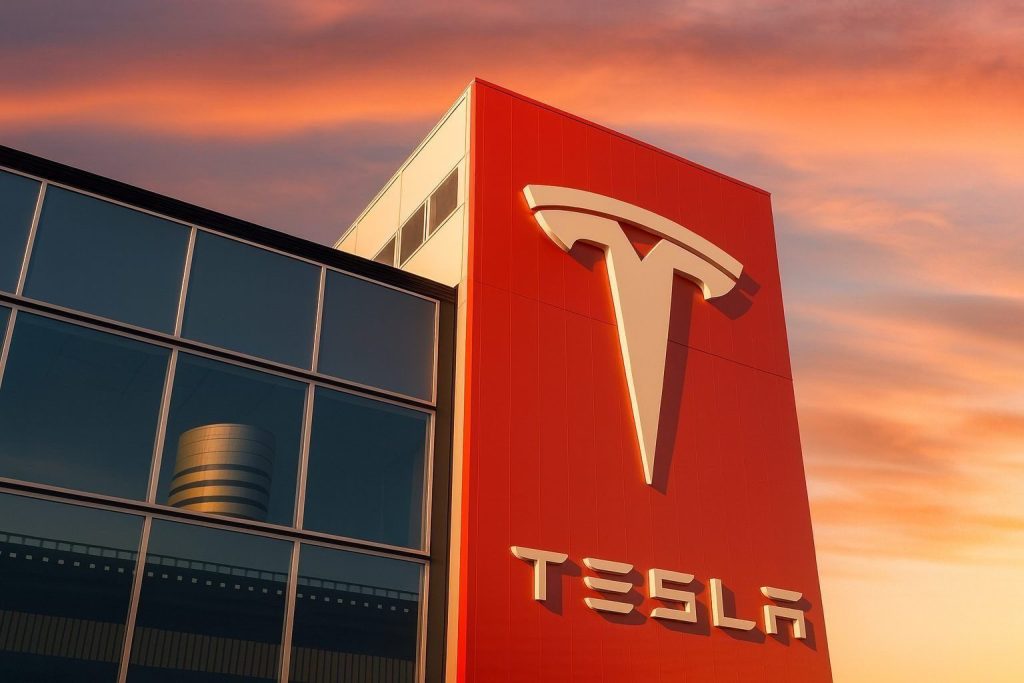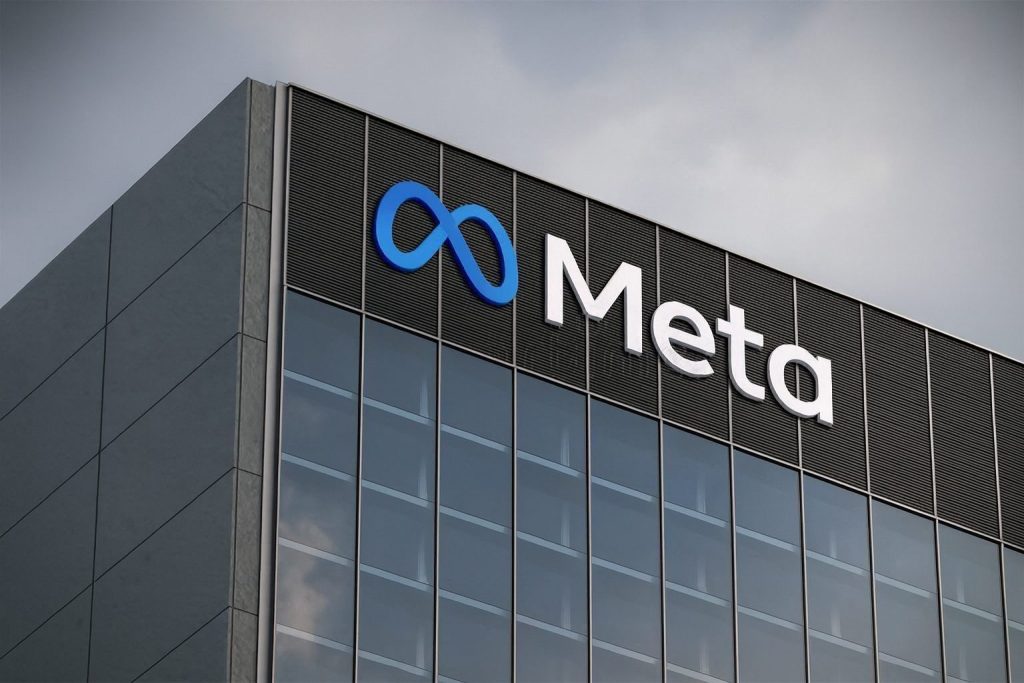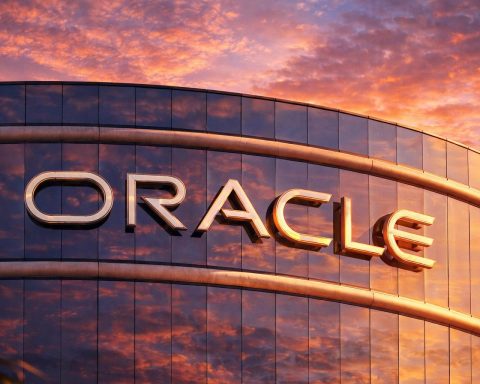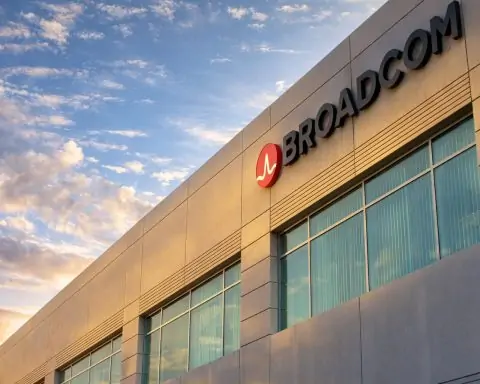Updated November 28, 2025
Oracle is racing to reinvent itself as an AI infrastructure giant, signing massive cloud deals with OpenAI and Meta, unveiling new AI databases and superclusters, and restructuring its workforce—all while facing mounting debt and fresh security and legal risks.
Oracle’s reinvention: from database giant to AI infrastructure heavyweight
Oracle Corporation, long known as the company behind the relational database, is in the middle of its most aggressive transformation in decades.
In 2025 the company has:
- Reshaped its leadership at the very top
- Signed some of the largest AI cloud deals ever reported
- Announced record cloud backlogs and future revenue projections
- Launched new AI‑native databases, agents and supercomputer‑scale clusters
- Implemented deep rounds of layoffs and faced new security and legal scrutiny
The result is a company trying to vault from “traditional enterprise software vendor” into the front rank of AI infrastructure builders—alongside hyperscalers like Amazon, Microsoft and Google—while carrying rising financial and operational risk.
Leadership shake‑up: Oracle returns to a co‑CEO model
In September 2025, Oracle replaced its long‑standing single‑CEO structure with a new co‑CEO model, appointing Clay Magouyrk and Mike Sicilia as co‑chief executives. Magouyrk, who previously led Oracle Cloud Infrastructure (OCI), now focuses on hyperscale AI and core cloud infrastructure. Sicilia, formerly head of Oracle’s industry and healthcare businesses, takes charge of applications, industries and Oracle Health. [1]
Safra Catz, CEO for more than a decade, moved into the role of executive vice chair of the board. The leadership shift is widely read as a signal that Oracle wants to clearly separate its fast‑growing AI and cloud infrastructure business from slower, more mature application and industry units—while still keeping both tightly aligned.
This structure matters for customers: products that sit inside Magouyrk’s “hyperscale AI” orbit are likely to see accelerated investment, while legacy or lower‑growth offerings face more pressure to consolidate or quietly wind down.
A trillion‑scale AI bet: mega‑deals, loans and debt
OpenAI, Meta and the rise of “giga‑contracts”
Oracle’s AI story in 2025 is dominated by a handful of enormous, multi‑year agreements centered on compute‑hungry AI customers:
- OpenAI deal (reported) – According to Reuters, Oracle is reported to have signed one of the largest cloud agreements ever: OpenAI is expected to buy around $300 billion in computing capacity from Oracle over roughly five years, making OCI a major backend for ChatGPT and related services. [2]
- Meta negotiations – The same Reuters report says Oracle is in talks with Meta on a multi‑year cloud deal worth about $20 billion, underscoring social platforms’ scramble to lock in GPU capacity. [3]
These numbers are not all finalized and remain partly based on anonymous sources, but they illustrate the scale of AI infrastructure spending—and how central Oracle aims to be to that build‑out.
Stargate and the OpenAI–SoftBank–Oracle triangle
Another pillar of Oracle’s AI strategy is Stargate, a joint data‑center venture with SoftBank and OpenAI that aims to build multi‑gigawatt AI facilities in the United States. Reuters reports that Stargate could involve up to $500 billion in investment over time. [4]
Those ambitions are now intersecting with fresh financing news: a Reuters story on November 28 says a group of banks is in talks to lend another $38 billion to Oracle and data‑center builder Vantage to fund additional sites for OpenAI, according to the Financial Times. [5]
Taken together with earlier financing, this suggests an emerging capital stack where:
- OpenAI locks in long‑term compute commitments
- Oracle and its partners borrow at massive scale to build data centers
- SoftBank and chipmakers like NVIDIA and AMD supply key hardware
The question is no longer whether Oracle is “serious about AI”—it is how much financial risk it is willing to shoulder to become one of AI’s core utilities.
Record backlog and an aggressive capex plan
The financial side of this bet is already visible in Oracle’s latest results. For its fiscal 2026 first quarter, reported in September 2025, Oracle disclosed: [6]
- Total revenue of $14.9 billion, up 12% year‑on‑year
- Cloud revenue (IaaS + SaaS) of $7.2 billion, up 28%
- Cloud Infrastructure (OCI) revenue of $3.3 billion, up 55%
- A stunning $455 billion in Remaining Performance Obligations (RPO), up 359% year‑on‑year
Analyst summaries of that quarter highlight that Oracle expects OCI revenue to grow 77% to $18 billion this fiscal year and to reach $144 billion annually within five years, supported largely by contracted backlog. [7]
The flip side: Oracle’s capital expenditures are also surging. Commentary around the quarter and subsequent coverage suggests Oracle could spend around $35 billion in capex in fiscal 2026, mostly on AI‑centric infrastructure. [8]
At the market level, Oracle’s stock has reflected investor enthusiasm. Shares recently traded around $202 on the NYSE, and have risen roughly 30–35% over the past six months, driven largely by AI expectations and the huge cloud backlog. [9]
The new AI stack: superclusters, AI data platforms and agents
Beyond the headline deals, Oracle has spent 2025 rolling out a dense stack of AI‑focused products, many unveiled at Oracle AI World in Las Vegas.
OCI Zettascale10: a supercomputer in the cloud
Oracle has announced OCI Zettascale10, which it describes as the largest AI supercomputer in the public cloud. [10]
Key points:
- Connects hundreds of thousands of NVIDIA GPUs across multiple data centers
- Delivers up to 16 zettaFLOPS of peak performance—on paper, orders of magnitude beyond today’s exascale systems
- Uses Oracle’s Acceleron RoCE networking architecture with NVIDIA’s AI infrastructure to achieve multi‑gigawatt scale
- Serves as the fabric for the flagship supercluster built with OpenAI in Abilene, Texas, as part of the Stargate project
The positioning is clear: Oracle wants OCI to be the place where frontier‑scale models are trained and served—particularly for customers who want extremely large, tightly coupled GPU clusters.
Oracle AI Data Platform: unifying data for generative AI
In October, Oracle announced general availability of the Oracle AI Data Platform, a service meant to help enterprises connect their existing data with generative AI models. [11]
The platform:
- Automates data ingestion, semantic enrichment and vector indexing
- Supports open table formats like Delta Lake and Apache Iceberg
- Provides a single catalog for data and AI assets to enforce governance and compliance
- Connects to Oracle’s major application suites (Fusion, NetSuite, industry clouds) with prebuilt integration
Oracle and its partners say more than $1.5 billion of partner investment and thousands of trained practitioners are being aligned around this platform, underscoring Oracle’s effort to position itself not only as a compute provider but also as a full “data‑to‑AI” stack.
Oracle AI Database 26ai: AI‑native data management
At the same event, Oracle introduced Oracle AI Database 26ai, described as an “AI‑native” evolution of the Oracle Database. [12]
26ai:
- Integrates AI across database management, data development, application development and analytics
- Adds AI vector search and deeper support for open formats like Apache Iceberg
- Is designed to plug directly into leading large language models and agentic AI frameworks
This move effectively turns the database itself into an AI platform, aligning with Oracle’s long‑standing strategy of embedding new capabilities directly into its core data engine rather than treating AI as a bolt‑on service.
AI Agent Studio and Fusion AI agents
On the application side, Oracle has dramatically expanded its AI Agent Studio for Fusion Applications and launched a Fusion Applications AI Agent Marketplace. [13]
Customers can now:
- Deploy Oracle‑validated, partner‑built AI agents directly inside Fusion Cloud ERP, HCM, SCM and CX
- Use Oracle’s agent studio to assemble agents that handle workflows across finance, HR, supply chain, sales, marketing and service
- Choose among multiple large language models, including OpenAI and other providers, thanks to Oracle’s multi‑LLM and multi‑cloud posture [14]
The marketplace model mirrors app stores in the mobile era: Oracle is betting that a rich ecosystem of vertical and process‑specific AI agents will lock customers deeper into its application suites.
AMD partnership: 50,000 MI450 GPUs and beyond
In parallel to its NVIDIA‑based clusters, Oracle has deepened its partnership with AMD. At Oracle AI World, the companies announced that Oracle Cloud Infrastructure will be the first hyperscaler to offer a publicly available AI supercluster powered by AMD’s next‑generation Instinct MI450 GPUs. [15]
Highlights include:
- Initial deployment of 50,000 MI450 GPUs starting in Q3 2026, expanding further in 2027 and beyond
- Integration with AMD’s new Helios rack‑scale AI platform, which supports up to 72 MI450 GPUs per rack and offers very high HBM4 memory capacity [16]
- A design that can scale OCI’s MI450 clusters to more than 130,000 GPUs, giving customers an alternative to NVIDIA‑based capacity
This dual‑vendor GPU strategy is crucial both for cost control and for mitigating supply‑chain risk as AI demand continues to exceed chip supply.
Global expansion: new cloud regions and “cloud in your data center”
Oracle is also expanding the physical footprint that underpins all this AI infrastructure.
- Second public cloud region in Italy – Oracle has opened a second Oracle Cloud region in Italy, strengthening its European presence and catering to customers with data‑sovereignty or redundancy requirements. [17]
- OCI Dedicated Region 25 – The company has introduced a new, smaller‑footprint version of its OCI Dedicated Region offering, which brings more than 200 AI and cloud services directly into customer data centers, aimed at regulated or latency‑sensitive environments. [18]
These moves give Oracle more flexibility to serve governments, financial institutions and other organizations that want hyperscale AI capabilities but cannot move all data to shared public regions.
Healthcare, finance and workforce: Oracle leans into regulated industries
One way Oracle differentiates itself from other cloud providers is through deep vertical applications. In 2025, three areas stand out: healthcare, financial services and workforce management.
Healthcare: ONC‑certified, AI‑powered EHR and TEFCA QHIN
Oracle Health, built largely on its acquisition of Cerner, has not had an easy integration, but the company is pushing hard to make it an AI showcase.
Recent milestones include:
- ONC certification of Oracle’s AI‑powered electronic health record (EHR) for ambulatory clinics in the United States—an important regulatory green light for its use in real‑world care settings. [19]
- Oracle Health’s network being designated a Qualified Health Information Network (QHIN) under the U.S. Trusted Exchange Framework and Common Agreement (TEFCA) program, which aims to standardize secure health data exchange nationwide. [20]
Together, these steps position Oracle as a key player in U.S. healthcare interoperability and AI‑assisted clinical workflows, even as it restructures parts of the Oracle Health organization.
Financial services: Chartis RiskTech AI 50 leader
In the financial sector, Oracle was named overall winner in Chartis Research’s “RiskTech AI 50 2025”, a ranking of vendors applying AI to risk management. [21]
Chartis highlighted Oracle’s strengths in:
- AI‑driven data management and data governance
- Document and content management using AI
- High‑performance computational infrastructure for risk and finance workloads
The award reinforces Oracle’s image as more than just a general‑purpose cloud—it is also a provider of deeply specialized, regulated industry solutions.
Workforce management: ISG Buyers Guide leadership
Oracle’s HR suite also had a good year. An Oracle blog noted that Oracle Workforce Management, part of Oracle Fusion Cloud HCM, was recognized as an overall leader in the 2025 ISG Buyers Guide for Workforce Management Basics—and was the only software vendor classified as a leader in all seven evaluated criteria, including adaptability, capability and total cost of ownership. [22]
Oracle was also named a leader in ISG’s workforce reports for healthcare, manufacturing, retail and workforce management suites, underscoring its push to blend AI‑driven scheduling, forecasting and compliance across industries where labor complexity is high.
Governance and portfolio moves: new board member, Ampere exit
Stephen Rusckowski joins the board
On November 20, Oracle announced that Stephen Rusckowski, former CEO of Quest Diagnostics, has been elected to its board of directors, expanding the board to 14 members. [23]
Rusckowski brings deep experience in healthcare diagnostics and regulated services—experience that dovetails with Oracle’s ambitions in Oracle Health and healthcare AI.
SoftBank completes Ampere acquisition; Oracle exits its stake
Another important, if less flashy, move came with SoftBank Group’s $6.5 billion acquisition of CPU maker Ampere Computing, completed in late November. Ampere, which designs Arm‑based server chips, was backed by Oracle and the Carlyle Group; the deal sees Oracle selling its stake as Ampere becomes a wholly owned SoftBank subsidiary. [24]
Oracle has used Ampere CPUs in parts of OCI and previously disclosed a significant shareholding. Exiting that position gives Oracle additional capital flexibility at a time when it is committing tens of billions to AI infrastructure and GPU capacity.
Layoffs and restructuring: the human cost of the AI pivot
Beneath the product and financial headlines, Oracle’s transformation has been accompanied by substantial workforce cuts.
Thousands already gone, more projected
Investigations using state WARN filings and employee reports indicate that Oracle eliminated more than 3,000 jobs globally between August and September 2025, affecting staff in the United States, India, the Philippines, Canada and Europe. Many of the cuts hit Oracle Cloud Infrastructure, Oracle Health, Advanced Customer Services and NetSuite teams. [25]
Separately, CIO reported that Oracle has embarked on a $1.6 billion restructuring plan, of which about $415 million had been spent by the end of August. Analysts at Forrester estimate the company could shed around 10,000 additional roles by the end of 2025, especially in legacy applications, overlapping corporate functions and some international operations. [26]
The pattern is clear: Oracle is reallocating resources from traditional software and services to capital‑intensive AI and cloud infrastructure. For customers, this raises legitimate questions about how aggressively Oracle will maintain less strategic products over the medium term.
Security and legal exposure: Oracle E‑Business Suite under pressure
While Oracle courts AI leaders and regulated industries, it is also facing heightened scrutiny over security and data protection.
Oracle E‑Business Suite zero‑day and cascading breaches
In 2025, a zero‑day vulnerability in Oracle E‑Business Suite (EBS) was exploited by attackers to compromise multiple organizations. One of the most recent victims to confirm impact is Cox Enterprises, which reported that a breach via Oracle EBS exposed data for 9,479 individuals; the Cl0p ransomware group has claimed responsibility. Cox said it applied Oracle’s security fix as soon as it became available. [27]
Other reported victims include Logitech, the Washington Post, GlobalLogic, Envoy Air and several universities, according to security press coverage referenced in the same reporting. [28]
Brown v. GlobalLogic and Oracle: a class action spotlight
The EBS issues have also moved into the courts. A new U.S. class‑action lawsuit, Brown v. GlobalLogic and Oracle, puts Oracle E‑Business Suite at the center of a high‑stakes data breach case. Legal analysis notes that the suit alleges failures by both GlobalLogic (an IT services firm) and Oracle to adequately protect highly sensitive workforce data processed via EBS, and highlights the operational and legal risk when zero‑day vulnerabilities hit platforms that centralize employee information. [29]
Regardless of how the case is resolved, it is likely to influence how enterprises think about:
- Their responsibilities versus vendors’ responsibilities for patching and hardening core business platforms
- Zero‑day preparedness and incident response
- Contract language around liability and notification timelines
For Oracle, it is a reminder that AI‑era growth doesn’t erase long‑standing security obligations around its more traditional software assets.
Oracle’s 2025 equation: enormous upside, equally significant risk
By late 2025, a few themes stand out in Oracle’s trajectory:
- AI is now the center of gravity
Oracle’s biggest contracts, its largest technical announcements and its long‑term revenue forecasts are all tied to generative AI workloads and AI‑assisted applications. From OCI Zettascale10 to AI Database 26ai and Fusion AI agents, Oracle is rebranding itself as an AI infrastructure and data platform company. - Multi‑cloud and multi‑model are strategic necessities
With Oracle Database@Azure, partnerships with Google and Amazon around multicloud, and support for multiple LLMs and GPU vendors, Oracle is trying to differentiate as an AI platform that interoperates with rather than replaces other clouds. [30] - Debt, concentration and execution are real risks
The reported $300 billion OpenAI deal, prospective $20 billion Meta deal, $38 billion loan package, and broader debt pile around OpenAI partners create concentration risk: a significant portion of Oracle’s AI future is tied to a small number of large customers and highly leveraged infrastructure projects. [31] - Customers must map themselves to Oracle’s new center
For CIOs and business leaders, the key question is: does my Oracle stack sit inside or outside the company’s next “S‑curve”?- If you are leaning heavily on OCI, AI Database, Fusion apps and Oracle Health, you are squarely in the strategic path.
- If your footprint is dominated by older on‑premises apps and legacy EBS deployments, you need a clear modernization or exit plan, especially given ongoing restructuring and security issues.
- Regulated industries are both opportunity and obligation
Healthcare, financial services and labor‑intensive sectors are at the center of Oracle’s product launches and analyst accolades—but they also expose Oracle to stricter compliance expectations and higher reputational stakes when things go wrong.
For investors, policymakers and customers, Oracle in 2025 is a case study in what it looks like when a mature enterprise software company tries to become a foundational layer of the AI economy. The upside is enormous; the balance sheet, technical roadmap and risk management practices will determine whether that upside is realized sustainably.
This story is still unfolding—and as the AI build‑out accelerates, Oracle’s choices over the next few years will help shape not just its own future, but the broader architecture of enterprise AI.
References
1. technologymagazine.com, 2. www.reuters.com, 3. www.reuters.com, 4. www.reuters.com, 5. www.reuters.com, 6. investor.oracle.com, 7. www.alpha-sense.com, 8. www.alpha-sense.com, 9. www.investing.com, 10. www.oracle.com, 11. www.oracle.com, 12. www.oracle.com, 13. www.oracle.com, 14. www.oracle.com, 15. www.oracle.com, 16. www.tomshardware.com, 17. www.oracle.com, 18. www.oracle.com, 19. www.oracle.com, 20. www.oracle.com, 21. www.oracle.com, 22. www.oracle.com, 23. investor.oracle.com, 24. www.marketscreener.com, 25. www.finalroundai.com, 26. www.cio.com, 27. www.techradar.com, 28. www.techradar.com, 29. www.mondaq.com, 30. investor.oracle.com, 31. www.reuters.com
